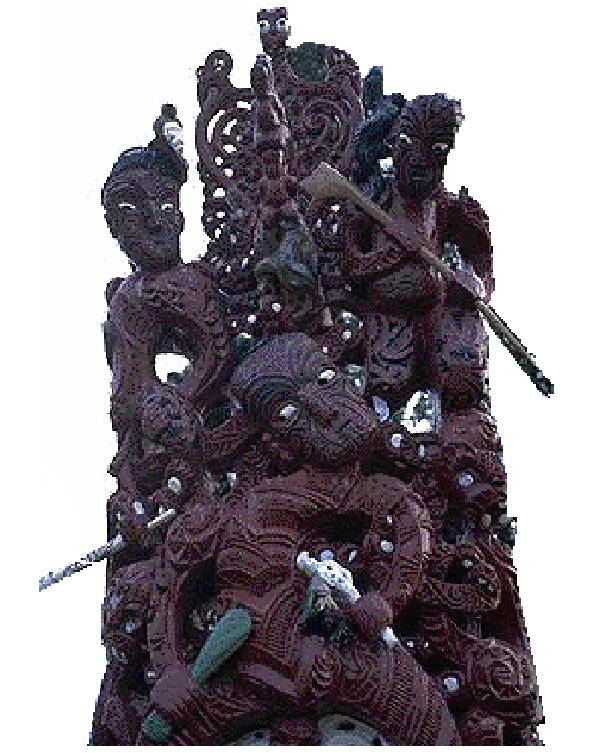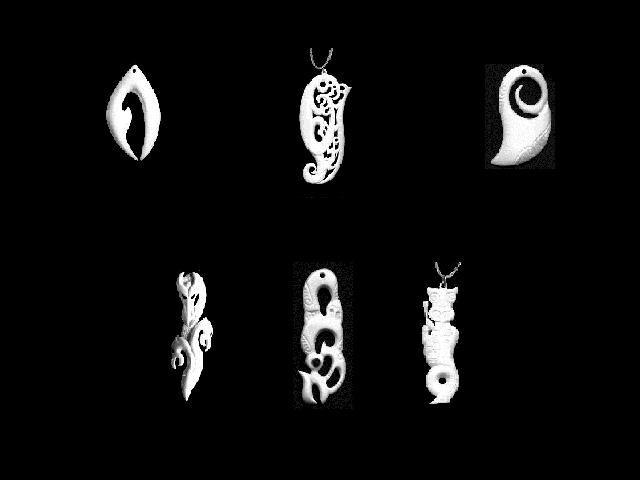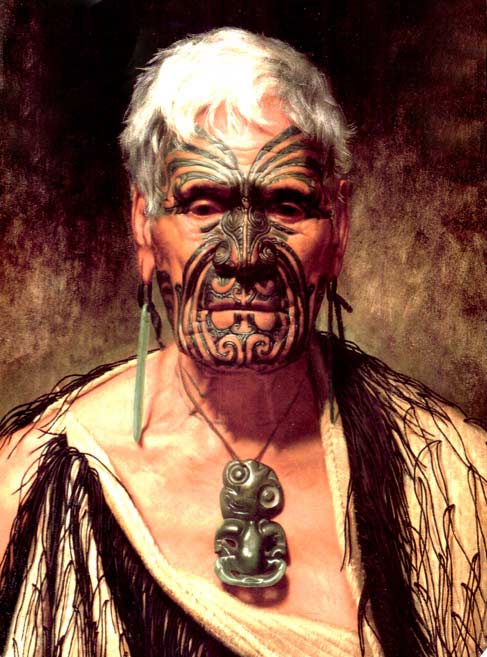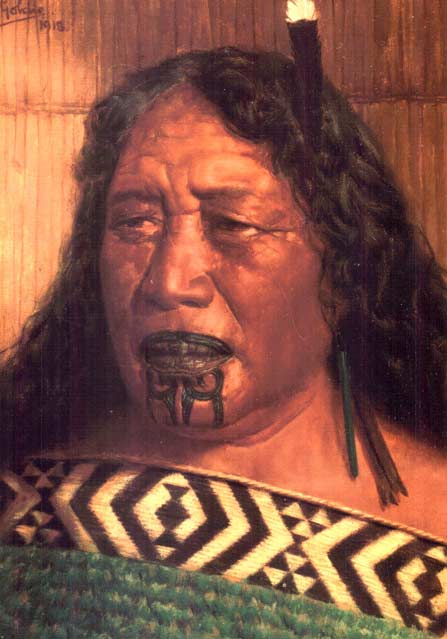Maori Maori Flag Maori Carving
The Maori also known in their own language as Tangata whenua (People of the land) first came to New Zealand in the middle
of the 10th century from somewhere in the Pacific islands, but
the main migration occured in the 14th century with a great fleet
of canoes from what is generally believed to be Hawaiiki. Due to
social problems probably caused by overpopulation and shortages
of food etc."Kupe" a skilled Polynesian navigator sailed from
his homeland to find another country in which to settle. When
he first sighted this country it appeared on the horizon as a
long white cloud
and so was named "Aotearoa" "Land of the Long White Cloud" which
is the Maori name for New Zealand to this day. Following Kupe there
came a number of canoes. These new inhabitants soon established
themselves and mixed with people who it is believed were already
here. From this point Maori culture has developed. Maori Canoe The maori was a warrior
race and spent much of their time at war with other
tribes The losers being enslaved or cannibalized.
Maori carvings
One of the traditional talents of the Maori race is their ability to carve.
Carving is done with wood, bone and nephrite which is known locally as green stone a type of jade Maori Tattoos
When the first European visitors came to New Zealand they were struck by the custom
of the then inhabitants (the Maori) of tattooing specially the faces of the men.This was a practice carried out to denote rank and
tribal affiliations. It. was carried out by first drawing the intricate patterns on the skin and then carving out grooves with a chisel and
mallet into which was inserted the pigment, although the face was the most likely place to be tattooed sometimes other parts of the
body were also tattooed. Tattoos were considered to be an attraction to women and to make a warrior look fierce in battle. Women
were also often tattooed but to a lesser extent than the men usually on the chin but they may also be tattooed on other parts of the
body. The practice started to die out for awhile but seems to be making something of a comeback in modern times.






The Maori had a social structure of tribes and sub-tribes made up of nobility, priests and slaves.
Land belonged to the tribe that was often enclosed in a pa or fortified village.
A treaty known as the "Treaty of Waitangi" was signed in 1840 between the crown and a number of Maori chiefs, making them
British subjects and giving them protection over their lands, forests fisheries and possessions.The demand for land however by
European immigrants caused a lot of trouble which caused a few minor battles ending in the Maori wars in (1860-1865)
Today the Maori population is increasing and Maori culture is
experiencing a flourishing renaissance





